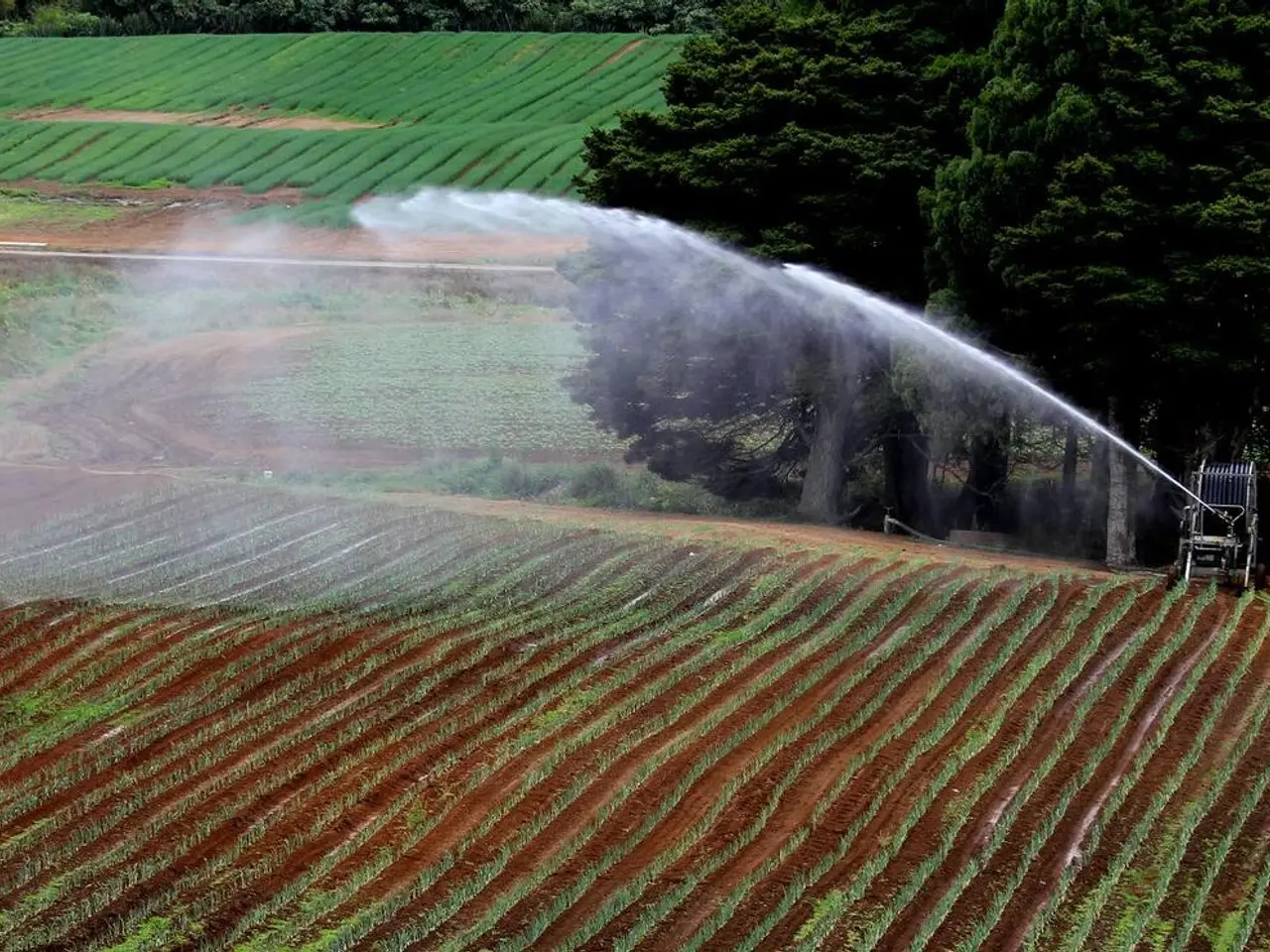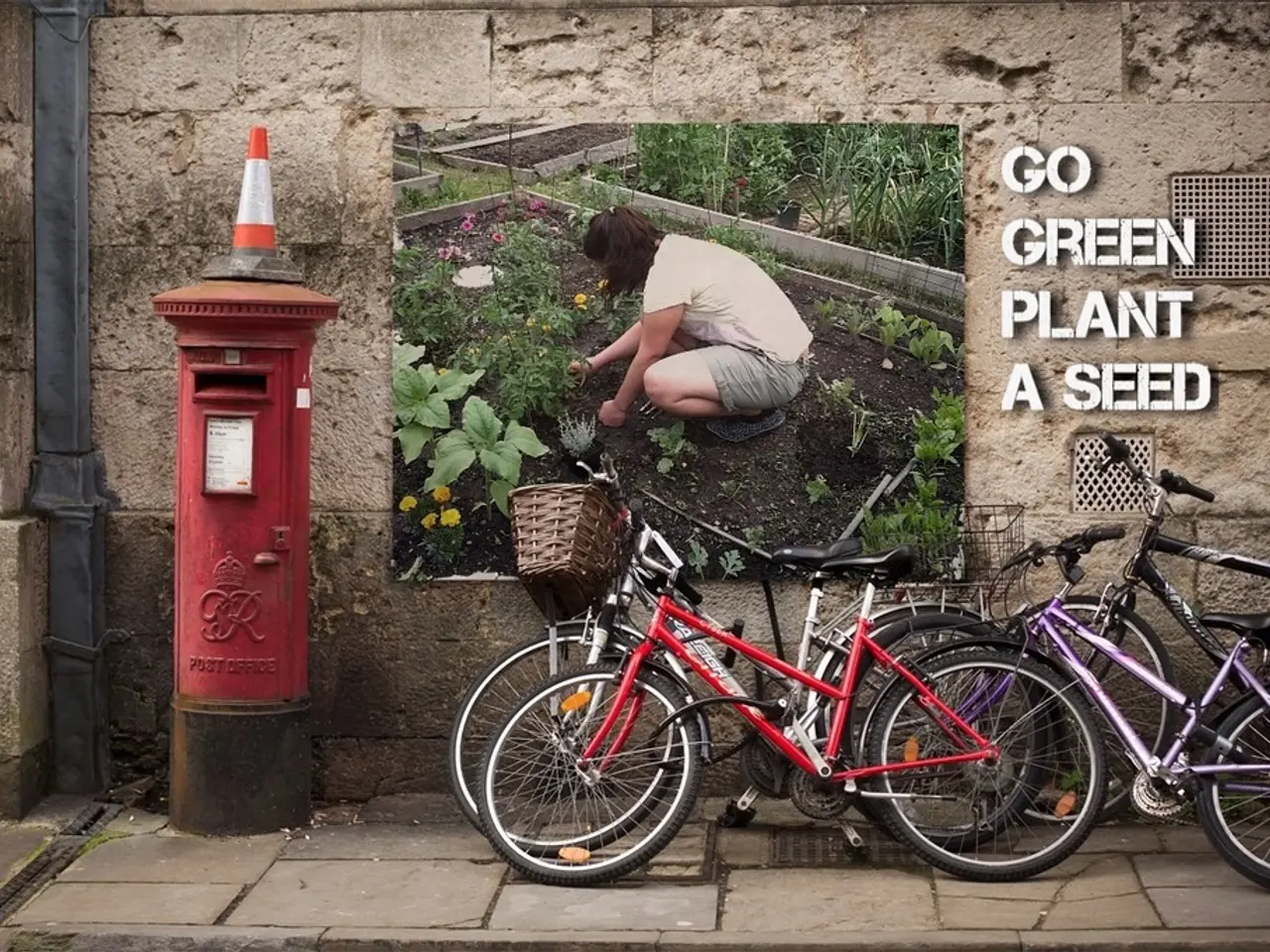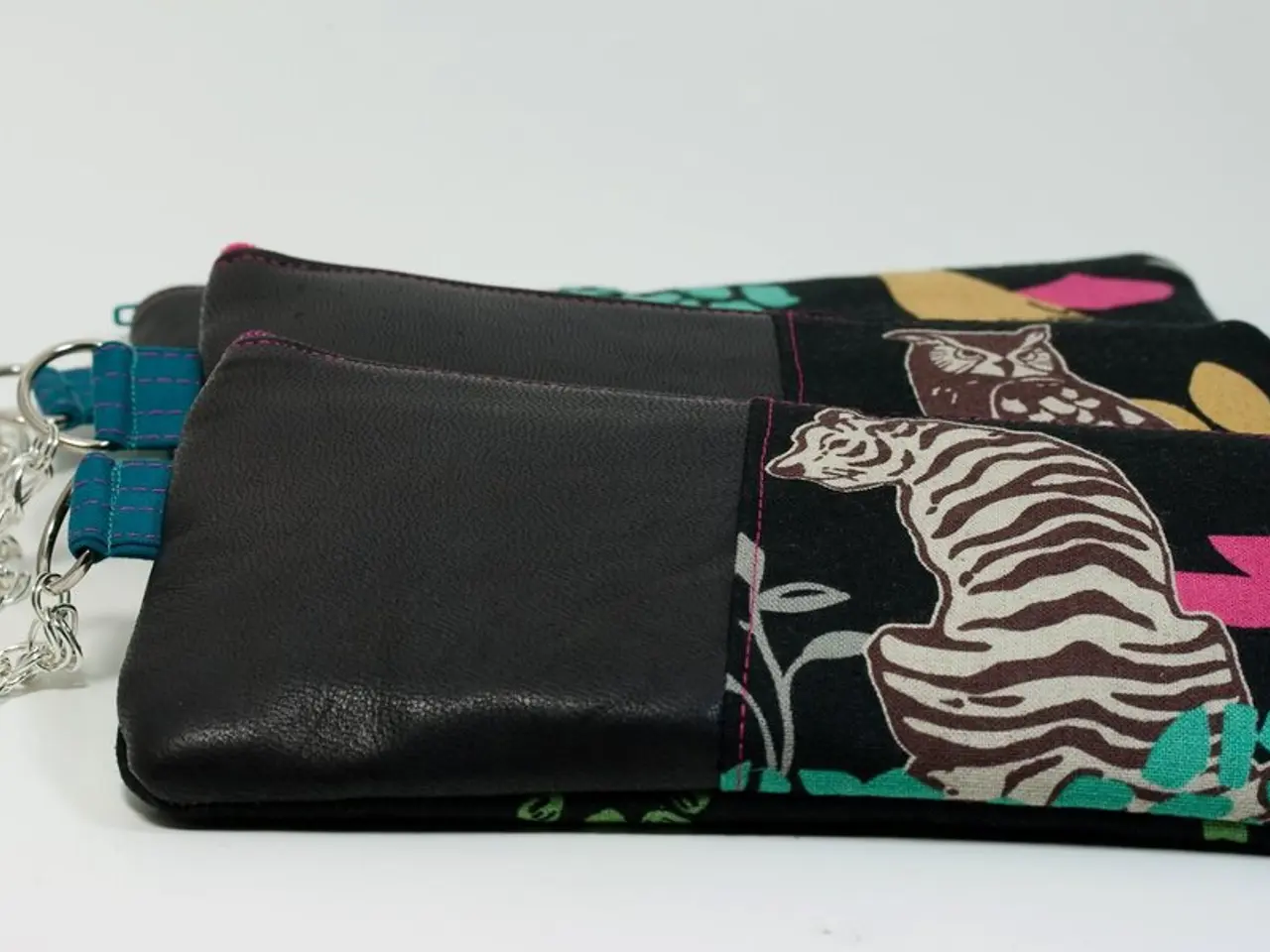Economic expansion aiming for a minimum of 8% in Vĩnh Long Province
Vĩnh Long Province, located in the heart of the Mekong Delta, is embarking on a comprehensive restructuring of its agriculture sector to drive economic growth and sustainability. The province aims for a minimum economic growth of 8% this year, following a positive first half, and targets 3.57% growth in agriculture, forestry, and fisheries in 2025[1][2].
Key elements of the restructuring include:
Crop restructuring
The province is reducing rice cultivation while increasing fruit farming and expanding high-quality rice production with crop rotation to increase value and reduce emissions[1][2]. In the case of perennial crops, Vĩnh Long will use high-quality, disease-resistant varieties and promote sustainable farming with tighter control over inputs[1][2].
Livestock stabilization and modernization
To maintain stable livestock numbers, Vĩnh Long is promoting large-scale, organic, and biosafe livestock farming with supply chain linkages for food safety and economic efficiency[1][2]. The province aims to stabilize headcounts of cattle, pigs, and poultry birds in livestock farming by year-end.
Adoption of green and circular agriculture
Vĩnh Long is encouraging sustainable farming practices, input control for cost reduction and product safety, and applying ESG (Environmental, Social, and Governance) standards to enhance competitiveness and sustainability[1][2][3].
Value chain development
The province is implementing programmes like “One Commune, One Product” (OCOP) to shift from small fragmented farms to integrated value chains with improved technology, traceability, and quality, helping local specialties reach higher domestic and export value[5].
Industrial ecological clustering and trade expansion
Vĩnh Long is forming industrial clusters and strengthening domestic and international trade networks, especially in key sectors like coconut farming which dominates the Mekong Delta region, aiming to boost export values significantly[3].
Overall, Vĩnh Long is pursuing a modern, multi-value agricultural model based on local resources, emphasizing green, sustainable growth combined with innovation and strong market linkages to support long-term economic and social benefits[1][2][3][5].
In addition to agricultural restructuring, Vĩnh Long is also focusing on poverty reduction and social welfare efforts, as well as support for ethnic minorities[1]. The province has completed its programme to eliminate makeshift and dilapidated housing, providing new homes to 6,530 needy households[1].
Moreover, Vĩnh Long is strengthening partnerships with businesses to ensure product consumption and implementing coordinated pest and disease control measures, especially for fruit and coconut trees[1]. The province's efforts have resulted in revenues of nearly VNĐ12.2 trillion ($465 million), representing 56.8% of the full-year target[1].
The province is also expanding models under the "Sustainable Development of One Million Hectares of High-Quality, Low-Emission Rice Associated with Green Growth in the Mekong Delta by 2030" programme[1]. The province is also working on a schedule for rice farmers to grow the autumn-winter crop on schedule and prepare for the 2025-26 winter-spring crop[1].
Following the merger with Trà Vinh and Bến Tre provinces, Vĩnh Long has streamlined its administrative system without disruption[1]. The province achieved a 7.49% economic growth, 2.93% growth in agriculture, 12.44% growth in industry, and 8.74% growth in services during the first half of the year[1]. The target output for aquaculture in the second half of the year is 531,900 tonnes, including 400,000 tonnes from farming and 131,900 tonnes from catches[1].
[1] VNS, 2023. "Vinh Long targets 3.57% growth in agriculture, forestry, fisheries in 2025". Vietnamnews.vn. [2] VNA, 2023. "Vinh Long to focus on agricultural restructuring, green growth". Vietnamnet.vn. [3] VOV, 2023. "Vinh Long strives to boost coconut, fruit exports". Vietnamplus.vn. [4] VNA, 2023. "Vinh Long targets stable livestock headcounts by year-end". Vietnamnet.vn. [5] VOV, 2023. "Vinh Long implements One Commune One Product programme". Vietnamplus.vn.
- In addition to agricultural restructuring and poverty reduction, Vĩnh Long is also partnering with businesses to ensure product consumption and implementing coordinated pest and disease control measures, particularly for fruit and coconut trees, which have yielded revenues of nearly VNĐ12.2 trillion ($465 million).
- Recognizing the importance of sustainability, Vĩnh Long is adopting green and circular agriculture practices, with a focus on input control for cost reduction and product safety, as well as applying ESG (Environmental, Social, and Governance) standards to enhance competitiveness and sustainability.
- To maintain stable livestock numbers, Vĩnh Long is promoting large-scale, organic, and biosafe livestock farming with supply chain linkages, aiming to stabilize headcounts of cattle, pigs, and poultry birds in livestock farming by year-end.
- Vĩnh Long is forming industrial clusters and strengthening domestic and international trade networks, especially in key sectors like coconut farming, which dominates the Mekong Delta region, with the goal of boosting export values significantly.




